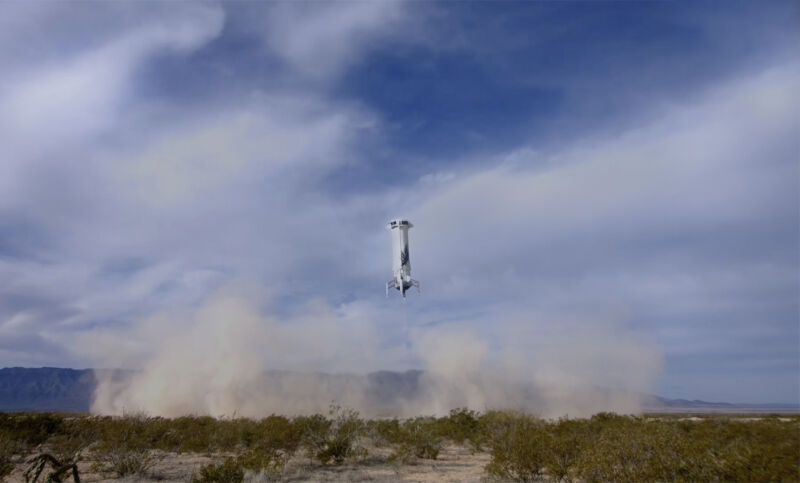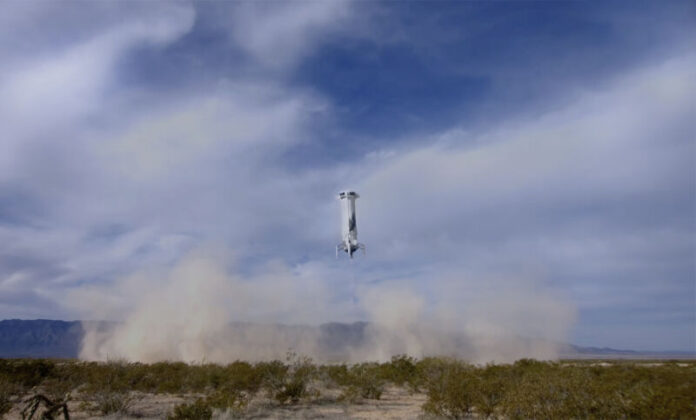
Enlarge / Blue Origin's New Shepard booster comes in for landing in West Texas at the conclusion of Tuesday's suborbital flight. (credit: Blue Origin)
With redesigned engine components, Blue Origin's New Shepard rocket took off from West Texas and flew to the edge of space on Tuesday with a package of scientific research and technology demonstration experiments.
This was the first flight of Blue Origin's 60-foot-tall (18-meter) New Shepard rocket since September 12, 2022, when an engine failure destroyed the booster and triggered an in-flight abort for the vehicle's pressurized capsule. There were no passengers aboard for that mission, and the capsule safely separated from the failed booster and parachuted to a controlled landing.
The flight on Tuesday also didn't carry people. Instead, Blue Origin, Jeff Bezos's space company, lofted 33 payloads from NASA, research institutions, and commercial companies. Some of these payloads were flown again on Tuesday's launch after failing to reach space on the failed New Shepard mission last year. Among these payloads were an experiment to demonstrate hydrogen fuel cell technology in microgravity and an investigation studying the strength of planetary soils under different gravity conditions.
Read 15 remaining paragraphs | Comments
Ars Technica - All contentContinue reading/original-link]




